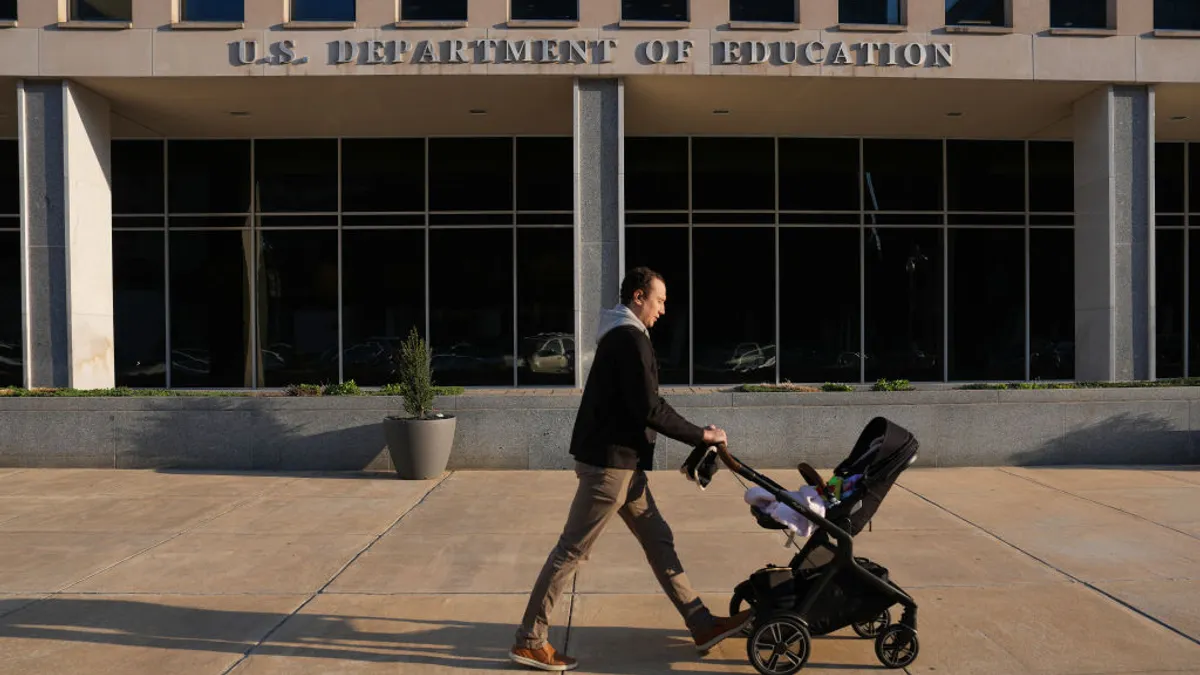Dive Brief:
- The U.S. Department of Education plans to launch “proactive” measures for students and families early in the federal loan borrowing process to help improve financial literacy.
- The department's Federal Student Aid unit will rebrand its Office of the Ombudsman and direct it to develop new borrower tools and provide “clear, accessible guidance on student loans and repayment,” the Education Department said in a news release Friday.
- The office is also tasked with developing a common manual for student loan servicers to “ensure servicers and collectors provide accurate, timely, and reliable information to all borrowers,” the agency said.
Dive Insight:
The FSA's ombudsman office — newly renamed as the Office of Consumer Education and Ombudsman — has historically focused on resolving disputes between students and loan servicers, colleges distributing their aid or the Education Department itself.
Under the Trump administration, the office will create resources for borrowers and their families to ensure "they are better equipped to make careful borrowing decisions and responsibly manage their federal student loan debt."
But the Education Department offered few specifics Friday about what those efforts might look like.
Nicholas Kent, the department's top higher ed official, said in a statement that the change “marks a shift toward earlier and more comprehensive engagement with families, ensuring they understand both the opportunities and potential risks of taking on federal student debt before they borrow.”
In addition to creating “clear, accessible guidance” on loans and repayment, the FSA ombudsman office is now tasked with developing data-based tools and resources for borrowers to navigate the process. It also plans to integrate those tools with “broader education efforts.”
The department did not immediately respond to questions Monday about what the new guidance and tools may entail.
Along with education efforts for borrowers, FSA wants to systematize its standards for student loan servicers.
On Monday, the Education Department posted a request for information in the Federal Register to help it develop a common manual for servicers. It's open for public comment through Oct. 8.
Historically, FSA contracts described overall objectives while allowing vendors “flexibility to conduct operations in a manner that is cost-effective while ensuring they achieve contract milestones,” the department wrote in its notice.
“Over the last 15 years, federal, state, and private stakeholders have raised concerns about the lack of published standards and corresponding inconsistencies in Direct Loan servicing operations that has led to borrower confusion and adversely impacted the ability for some borrowers to repay their federal student loans,” the agency added.
The department flagged several issues in servicing, including inconsistent application of guidance resulting in borrowers experiencing “ different outcomes based solely on the vendor assigned to manage their loans.”
It also pointed to areas without guidance — such as how servicers should handle borrower overpayments and engage with delinquent borrowers — and a lack of standard protocols for communicating with borrowers and counseling them on their deferment, forbearance and repayment options.
The department described a piecemeal approach to correcting issues that is costly for servicers and has “created unnecessary borrower and stakeholder frustration” by changing existing practices without public feedback, the department said.
To remedy that, FSA aims to incorporate borrower complaints and “systemic issues” into its manual, as well as request policy input from servicers. The office plans to complete the manual by next July — in time for the Education Department's consolidation of several repayment options into just two. Republicans authorized the change in the massive spending bill signed by President Donald Trump this summer.
According to the Education Department, some 6 million borrowers were delinquent on their student loans as of June, including 4 million who were at risk of defaulting in the next six months. Another 5.3 million were in default, the agency said.













